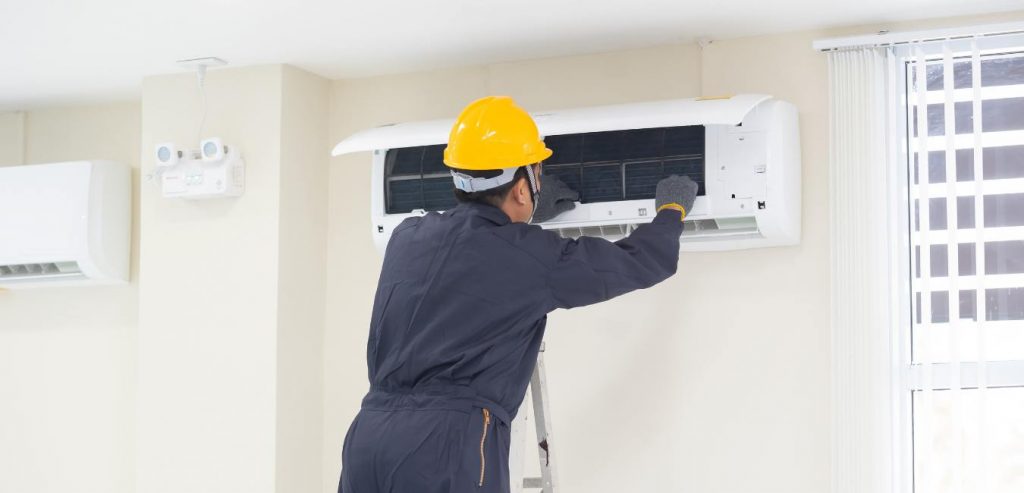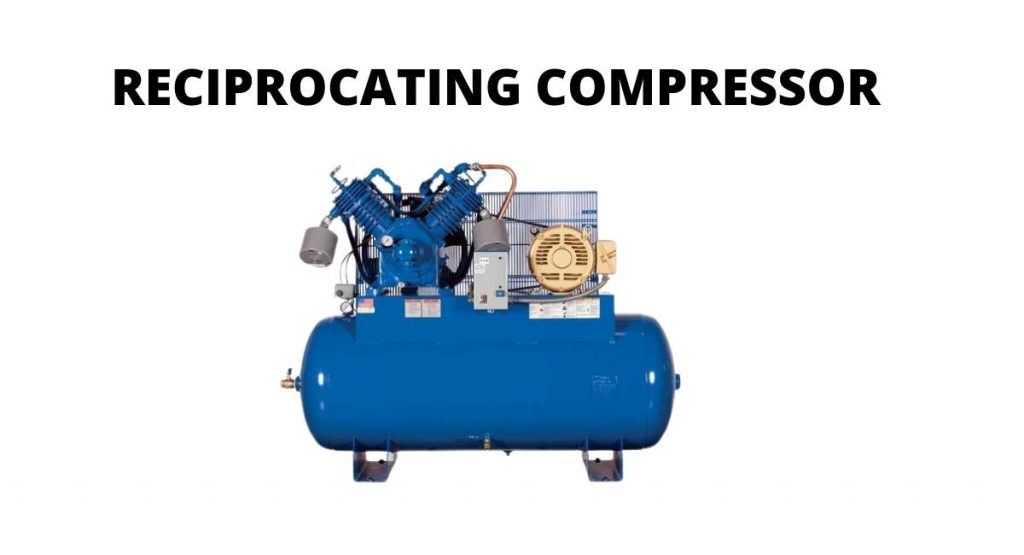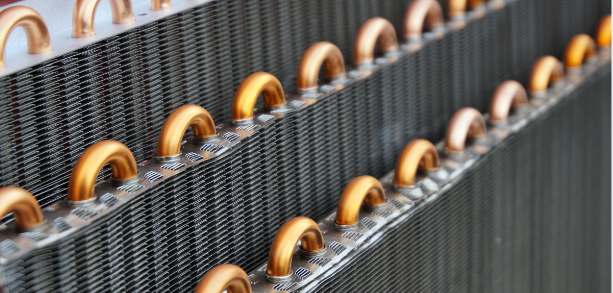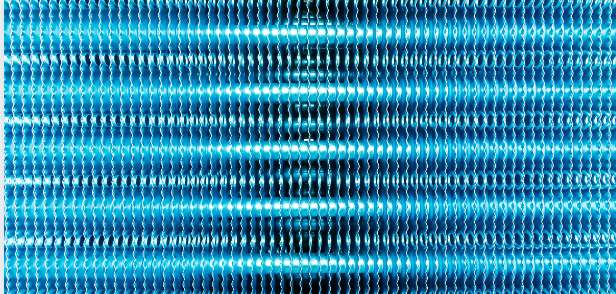How air conditioner Works? Have you ever stopped to wonder about the machine that works tirelessly to keep you cool? We simply switch on the Air Conditioner without ever giving it a second thought about what goes on ‘within’. Nevertheless, the machinery of the Air Conditioner is an interesting one. As you pop down on your comfortable bed, under the cool of the Air Conditioner, it is worth a moment of your thought to peer into the engineering that goes within.

Contents
The Insides Of The Air Conditioner
The Science of cooling is rather an interesting one inside the Air Conditioner. So, let’s pull-apart the outer cover of this appliance to take a look at the various parts of the machine:
Refrigerant
This is a special fluid used inside the Air Conditioner which contains certain specified cooling technology. The system involves the circulation of the ‘Coolant’ within the closed-loop within the main body of the Air Conditioner. It is the refrigerant that is responsible for carrying the heat from within your space to the outside. It is during its ‘course’ through the cooling Cycle that the refrigerant changes from ‘Liquid state’ to the ‘gaseous’ state. This happens as the coolant makes its way across the Cooling tubes and the Copper coils, which connects the outside unit with the inside unit. As the heat is absorbed from the air inside, the coolant then makes its way to the outside unit, where the ‘heat’ collected is released safely. This is why you feel a ‘blast of heat wave’ as you walk across the outside unit of the Air Conditioner. As the heat is released outside, the coolant then makes its way back into the cooling Cycle. This is the way it is recycled back and forth as long as the machine stays switched on.
Compressor

Have you ever wondered how the refrigerant is pressurized? Well, it is done with the help of the ‘Compressor’. As this is done, the temperature of the Compressor rises following the ‘Combined Gas Laws’. You can imagine the gas to be ‘squeezed’ very tightly, to compress as desired and heat up in the process. This is a vital step to maintain the temperature of the refrigerant higher than that outside. Thus, the heat will flow from the hotter area to the relatively cooler area.
Condenser Coils

The Out Door Air Conditioner Unit comprises the Condenser coils. It is here that the refrigerant at high temperature and pressure is received. The function of the Condensor coil is to ensure the safe transfer of heat to the outside air. The Condensor fans further assist the dispersal of the heat energy over the Coils. At this point, the refrigerant is free from its heat and changes back into the Liquid phase.
Expansion Valve
Now that the refrigerant has rid of its heat, it is still not cool enough. So, before it is allowed to enter the Evaporator Coils, it goes through the Expansion valve. This valve has ‘thermostatic properties’ that further assist it to ‘cool’ down. Thus, the refrigerant is depressurized, and its temperature is also decreased at the Expansion valve. This is when the refrigerant converts back into the gaseous state that it started with. The Expansion valve is also responsible for controlling the amount of refrigerant that enters the Evaporator.
Evaporator coil

This is, in a true sense, the ‘Hero’ of the cooling Cycle. It is here that the heat from your room is absorbed. As the depressurized liquid coolant enters the Copper tubes from the Expansion Valve, the air from the indoors is made to pass across these tubes/coils. Thus, the overall effect of this step is the ‘cooling’ of your room. Here the 2nd law of Thermodynamics is followed, which states that ‘heat flows from the hot area to the cooler area naturally’. At this point, the heat is absorbed by the refrigerant, and it changes back into Vapour form.
The Cooling Cycle:
How Air Conditioner(AC) Works? Well, let us get into the details of the Cooling Cycle.
- The Cycle starts with the warm air from within your room being sucked into the Air Conditioner. Have you noticed the ‘blade/grill type structures present at the base of your machine? Well, it is here that the warm air enters the system.
- This air travels across the ‘Coolant Coils’ where the refrigerant is circulating. This causes the incoming air to ‘cool’ down considerably. Also, a dehumidifier works simultaneously by removing any excess moisture from the air.
- Now, the air is made to travel across the heating element of the machine.
- A fan assists the air to be pushed back into the room through the same grill is entered. This is the cool air that you feel as you get closer to the machine.
- As the COllant works its way through the Coils, it picks up the heat from the air. This causes it to evaporate, thus, turning into a hot gas. It now makes its way from the inside of the machine to the outside. Now, after releasing the ‘heat blast’ outside, the coolant travels back into the compressor unit and the Condensing pipes and converts back into its original liquid state.
- Now, the liquified coolant is ready to disembark its journey back into the cooling Cycle. This continues as long as the Air Conditioner stays switched on.
- Meanwhile, the heat released is further pushed out with the help of metal plates and fans.
- Thus, after a few cycles, the air indoors is completely ‘chilled’, and you feel cool.
How Air Conditioner(AC) Works?: The Conclusion
So, this was the journey of the coolant through the various parts of the Air Conditioner as it works to ‘cool you down. Lately, various eco-friendly Air conditioner models have been launched into the market. This is mainly because the ‘Refrigerant’ used in the Air Conditioning Units has Global Warming properties. The most commonly used refrigerant is the R-12, which possesses properties that cause Ozone Depletion. However, the latest models include the R-22 and R-410A refrigerants which are more eco-friendly. They are also known to offer better air quality and are more reliable. Conclusively, as a responsible citizen of the world, we must make a sustainable choice which is beneficial both for the Plant and our family.
Also Read:
- Which Gas is Used in Air Conditioner?
- Air Cooler Vs Air Conditioner(AC): Which is Better?
- What Is The Best Temperature For AC in Summers?
- Reciprocating Vs Rotary- Air Conditioner(AC) Compressor-which one is Better?
- Can an Air Conditioner(AC) Run on an Inverter?
- Split AC Vs. Window AC- Which One Should I Buy?
- Copper Coil Vs. Aluminium Coil in AC-Which Works Better?
- Gold Fin Vs. Blue Fin Condenser Coils in AC- Which Works Better?
- Central AC Vs. Split AC-Which One You Should Buy?